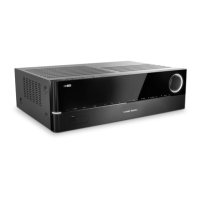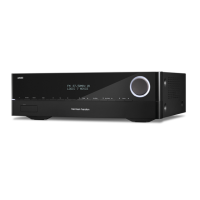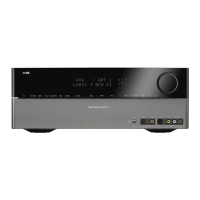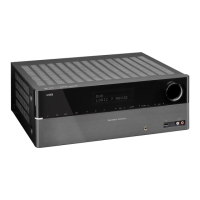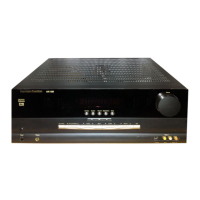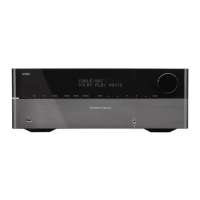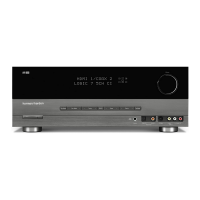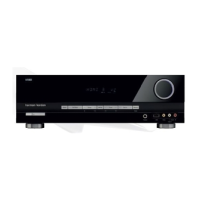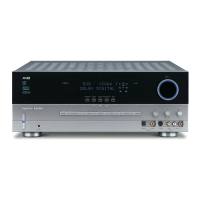Rear-Panel Connectors
7
Rear-Panel Connectors, continued
Digital Audio connectors: If your non-HDMI source devices have digital outputs,
connect them to the AVR’s digital audio connectors. NOTE: Make only one type of
digital connection (HDMI, optical or coaxial) from each device. See Connect Your
Audio and Video Source Devices, on page 16, for more information.
Radio Antenna connectors: Connect the supplied AM and FM antennas to their
respective terminals for radio reception.
Analog Audio connectors: The following analog audio connectors are provided:
• Analog Audio Input connectors: Use the AVR’s Analog Audio Input connectors
for source devices that don’t have HDMI or digital audio connectors. See
Connect Your Audio and Video Source Devices, on page 16, for more
information.
Network connector: If your home network is wired, use a Cat. 5 or Cat. 5E Ethernet
cable (not supplied) to connect the AVR’s Network connector to your home
network to enjoy Internet radio and content from DLNA-compatible devices that
are connected to the network. See Connect to Your Home Network, on page 18,
for more information.
Subwoofer Pre-Out connector: Connect this jack to a powered subwoofer with a
line-level input. See Connect Your Subwoofer, on page 15, for more information.
IR and Trigger connector: The following IR and trigger connectors are provided:
• IR In connectors: When the IR sensor on the front panel is blocked (such as
when the AVR is installed inside a cabinet), connect an optional IR receiver to
the IR In jack.
• 12V Trigger connector: This connector provides 12V DC whenever the AVR
is on. It can be used to turn on and off other devices such as a powered
subwoofer.
HDMI Output connectors: If your TV has an HDMI connector and you are connecting
HDMI source devices to the AVR, use an HDMI cable (not included) to connect it to
the AVR’s HDM
I Out connector
.
Notes on using the HDMI Output connector:
• When connecting a DVI-equipped display to the HDMI Out connector, use an
HDMI-to-DVI adapter and make a separate audio connection.
• Make sure the HDMI-equipped display is HDCP (High-bandwidth Digital
Content Protection)-compliant. If it isn’t, do not connect it via an HDMI
connection; use an analog video connection instead and make a separate
audio connection.
Speaker connectors: Use two-conductor speaker wire to connect each set of
terminals to the correct speaker. See Connect Your Speakers, on page 14, for more
information.
Analog Video connectors: The following Analog Video connectors are provided:
• Composite Video Input connectors: Use composite video connectors for video
source devices that don’t have HDMI connectors. You will also need to make an
audio connection from the source device to the AVR. See Connect Your Audio
and Video Source Devices, on page 16, for more information.
• Composite Video Monitor Out connector: If your TV or video display does
not have an HDMI connector, or if your TV does have an HDMI connector
but you are connecting some source devices with only composite video
connectors, use a composite video cable (not included) to connect the AVR’s
Composite Video Monitor Out connector to your TV ’s composite video input.
HDMI
®
Input connectors: An HDMI connection transmits digital audio and video
signals between devices. If your source devices have HDMI connectors, using
them will provide the best possible video and audio performance quality. Since
the HDMI cable carries both digital video and digital audio signals, you do not have
to make any additional audio connections for devices you connect via the HDMI
connection. See Connect Your Audio and Video Source Devices, on page 16, for
more information.
AC Input connector (AVR 151 only): After you have made and veried all other
connections, plug the supplied AC power cord into this receptacle and into an
unswitched wall outlet.
Power cord (AVR 151 only): After you have made and veried all other connections,
plug the power cord into an unswitched wall outlet.

